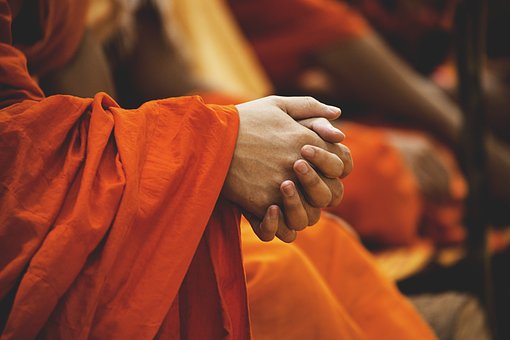The Five Precepts of Buddhism are the basis of the moral code. If one asks about whether or not there are morals in Buddhism, simply refer to the “Five Precepts.” The Five Precepts are linked with the Four Noble Truths, the Eightfold Path, and the Three Universal Characteristics of Buddhism. Also, the Five Precepts act as a “safety guide” of sorts in regards to avoid getting infected by Buddhism’s “Three Poisons” which are also known as the “Three Root Evils.” Buddhism’s Five Precepts are known as the following: “Panatipata veramani sikkhapadem samadiyami,” “Adinnadana veramni sikkhapadam samadiyami,” “Kamesu micchacara veramani sikkhapadam samadiyami,” “Musavada veramani sikkhapadam samadiyami,” and “Suramerayamajja pamadatthana verami sikkhapadam samadiyami.”
Interpreting Buddhism’s Five Precepts
The website known as Buddha Net gives an in-depth “Q & A” in regards of interpreting Buddhism’s Five Precepts.
Respectively, the First Precept translates as the “precept from taking the life from living things.” You refrain from destroying living creatures such as animals, plants, and so forth. If aligned with Shinto, even inanimate things could be considered living and sentient because they might have a soul.
In regards to the First Precept, it says that good intentions are never fully good. If you had to kill a pathogenic organism to save other people, you are still committing a sin according to Buddhism. This also goes to killing someone in order to save yourself. One could say there is the existence of “necessary sins.” It also aligns with one of the recently established mortal vices created by the Vatican called “environmental pollution.”
Be impartial to everything
The explanation also further explains that Buddhism teaches its followers to be impartial to everything. In short, everything deserves compassion. That includes the insects you might come across for the most part.
The Second Precept translates as the “precept of not taking which is not given.” This can be translated into many things. Easiest translations would be stealing money, jewelry, vehicles, and so forth. In short, stealing is wrong.
The Third Precept translates as the “precept of not participating in sexual misconduct.” The Q & A on Buddha Net explains that it does not mean to take a vow of celibacy. Under this precept, one should not try to use treacherous means to get someone to have sex with us. Also, this can be extended to possible emotional and social consequences that affects other people. Adultery is also classified as sexual misconduct.
 Under this interpretation, pre-marital sex is all right as long as there is love, attraction, and/or mutual agreement between partners. But, it stresses that the biological function is to have children. In this respect, one is encouraged to use protection. Under this Precept, it shows the gray area in regards to LGBT lifestyle. If you go by strict morals of sex without the intention to reproduce, then it would be classified as a sin. If you go by this precept and go further in regards to love, mutual agreement, and so forth, then the LGBT lifestyle by no means a sin.
Under this interpretation, pre-marital sex is all right as long as there is love, attraction, and/or mutual agreement between partners. But, it stresses that the biological function is to have children. In this respect, one is encouraged to use protection. Under this Precept, it shows the gray area in regards to LGBT lifestyle. If you go by strict morals of sex without the intention to reproduce, then it would be classified as a sin. If you go by this precept and go further in regards to love, mutual agreement, and so forth, then the LGBT lifestyle by no means a sin.
The Fourth Precept translates as the “precept of using the correct speech.” This can be interpreted as many different things. The main interpretation is refraining from telling lies. It can also be extended to slander, character assassination, etc. Asides from that, we refrain from using hurtful and hateful words. In regards to politics, we are to abstain from mudslinging. If this is the norm in business, politics, and so forth, then change is needed.
The Fifth and Final Precept translates as the “precept of not taking intoxicating liquids and drugs.” Thus, we do not take actions that warrants much trouble and danger in the future.
Also, the Five Precepts are also known as the “Five Faultless Gifts.” By following all five precepts, we free ourselves from danger, animosity, and oppression.





